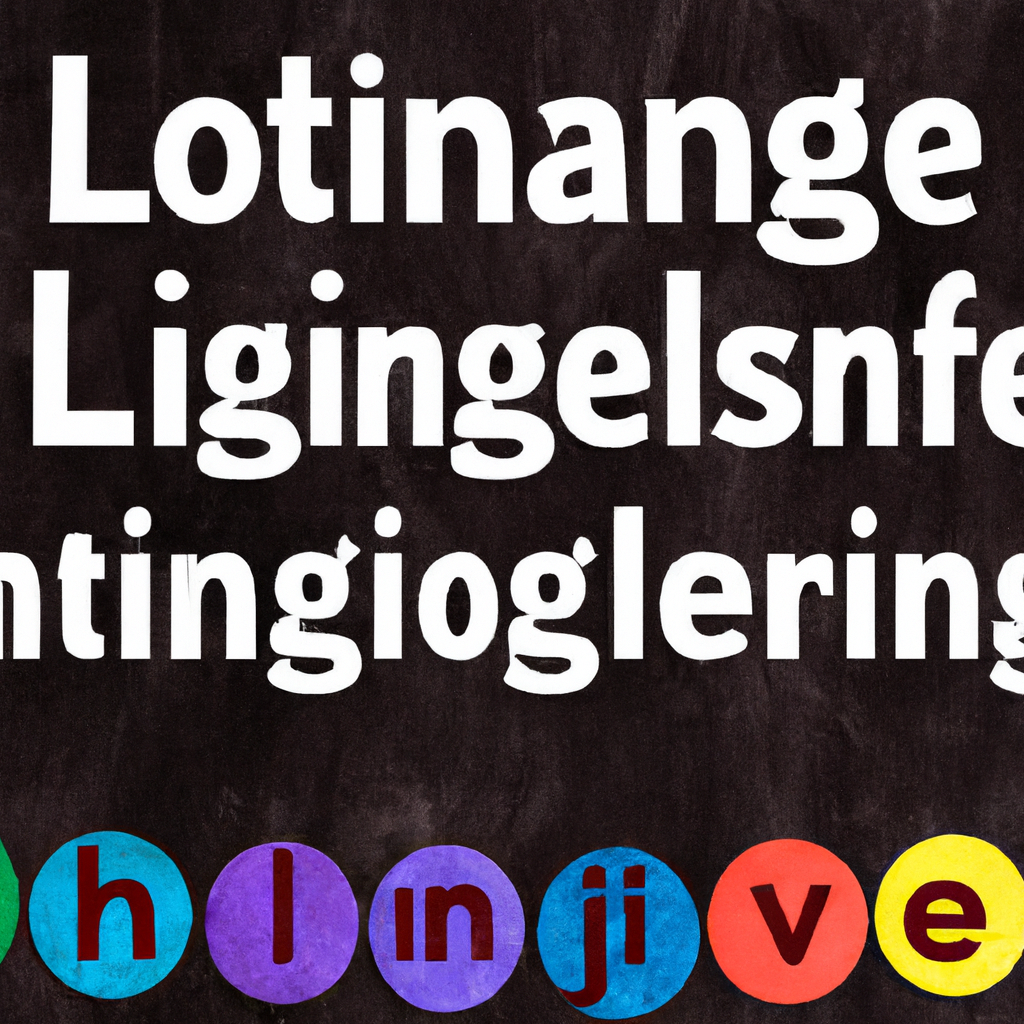So much of a culture’s beliefs, values, and stories are tied to its language, making it a vitally important part of Indigenous heritage. Sadly, many First Nations languages around the world are currently endangered or on the brink of extinction. However, there is hope, and with passionate dedication, Indigenous people are preserving and even reviving many languages so that their rich heritage can be passed down to future generations. This article will focus on the importance of preserving and reviving First Nations languages, and discuss some of the innovative strategies and creative projects being used worldwide to ensure they live on.
1. Rewriting the Story of First Nations Languages
Canada has a rich and diverse history, and one of its unique features is the commitment to protecting the cultural identities of the nation’s First Nations people. This includes maintaining their rich heritage of language and storytelling. It’s not enough to simply preserve these languages, however – they must be nurtured and celebrated through a variety of practices.
One way to celebrate and reinvigorate the story of the First Nations is through rewriting the narrative. This includes a variety of practices, such as:
- Reframing stories to focus on the strength and resilience of the people affected.
- Crafting new stories that capture the spirit of the original oral story.
- Making sure the rewritten story features proper representation of the people and their culture.
can be a powerful way to show respect for the culture and history of the people. It also helpsstrengthen the bond between the community and its language by reinterpreting enduring stories in ways that are more relevant to the modern times.
In order to ensure these rewritten narratives are accurate and meaningful, it’s important to consult those who are knowledgeable about the language and culture of the First Nations. A diverse range of perspectives should be taken into consideration, and collaboration should be fostered between all those involved in the rewriting process.
Through rewriting the story of the First Nations languages, these stories can become more accessible and meaningful to community members both young and old. It’s a way to celebrate the history and traditions of the First Nations people while also introducing them to new generations.

2. Unlocking the Power of Indigenous Tongues
If delving into the depths of culture is a journey that intrigues you, you’re in luck: offers a thrilling exploration. Indigenous language has had an indelible impact on our world, and its history spans ages. Yet in some regions, these languages have dwindled due to lack of education and cultural assimilation.
Why is protecting indigenous languages important? Gathering and preserving knowledge is key to Understanding our cultural heritage, and indigenous languages are the vehicle for that knowledge in many places. It is astonishing how much wisdom and perspective can be gained from revitalizing ancient influences. In addition, preservation of the language offers a measure of restitution and respect to peoples who may have been oppressed through invasion or colonization.
It has become increasingly crucial to promote research and indigeneous language conservation. Knowing our global heritage is precious — and we all stand to benefit immensely from preserving the richness of the peoples who have spoken these languages.
- Revitalizing ancient cultures is a form of reparation.
- Using endangered languages gives us clues to past history and customs.
- Preserving languages promotes pride in native cultures.
Aside from the value to history, indigenous languages are a critical tool for the present. They are essential in understanding the modern global climate from a deeper perspective. Staying connected to the history and developing a working knowledge of languages from around the world is instrumental in bridging divides.
Protecting different language varieties is essential to maintaining an inclusive attitude towards strangers and helping to create harmony. Conservation of different languages allows us to steward our values of hospitality, as well as to carry out intricate geopolitical objectives. holds value beyond imagination.
3. Taking Action to Preserve First Nations Languages
Preserving the myriad of First Nations Languages is a particularly challenging task. Despite this, there are steps that can be taken to prevent the language from becoming extinct in the future. Here are some possible actions:
- Raise Awareness – One of the best ways to ensure language preservation is to make sure everyone knows how important this cultural element is. This is especially true for the youth.
- Establish a Documentation Process – Establishing a process to document the language, it’s words, and meanings as First Nations people continue to speak the language.
- Create Language Immersion Programs – One great example of this is the immersion program calledᐃᓂᐱᓐ uinhinpin [We Are Learning]. This program is designed to help empower the Indigenous community in protecting its culture and language.
- Encourage Traditional Storytelling – Storytelling has always been an important part of First Nations culture. Encouraging the continuation of this tradition will ensure that the language will be passed down through generations.
- Set Up Language Revitalization Programs – Working with speakers of the language to set up language revitalization programs in schools and universities is a great opportunity for language preservation.
Preserving these languages is essential for both the present and future generations to know the history and culture of Aboriginal peoples. It’s also essential for keeping them connected to their land. As well, it’s important for the cultures of the Indigenous people to be kept alive for everyone around the world. This is why we need to work to protect the language of First Nations.
The preservation of language is not only important to Indigenous communities, but is very important to the whole world. The survival of these languages is a key part of preserving cultural heritage. It is our duty to ensure that current and future generations have the opportunity to enjoy these cultural elements.
There is no single solution to the challenge of preserving First Nations languages. However, with meaningful efforts on multiple fronts, we can make great progress in securing these precious languages for future generations.
4. Opening the Door to Reviving Indigenous Languages
The world has seen an era of globalization in the past few decades. While individuals have become more knowledgeable about global cultures, the loss of ancient languages has been tremendous. Indigenous languages, in particular, have been greatly affected by the global movement toward English.
Reviving Indigenous languages is a way to bridge the divide between generations, and to bring cultures, histories, and traditions that could otherwise be lost, back to life. This goal can be accomplished by taking steps to create an environment that will encourage the growth of Indigenous languages.
1. Education
The first step is to make sure Indigenous languages are taught in the classroom and at home. Schools can hold classes in Indigenous languages, allowing students to learn about their culture and heritage. Providing educational materials that are designed specifically for Indigenous languages can also encourage students to learn them.
2. Awareness
Building awareness about the importance of Indigenous languages is essential. Organizations can hold conferences and public events with local Indigenous communities to educate the public about these languages. Publications can provide information about the history and cultural importance of Indigenous languages.
3. Opportunities
Providing opportunities for Indigenous language learners is also essential. Creating a special program for those who are dedicated to studying and maintaining Indigenous languages can incentivize and encourage more people to learn them.
4. Technology
Online courses are a great way to make sure Indigenous languages are better understood and supported. Making digital resources available in communities as well allows for more access to Indigenous language learning. Additionally supporting mobile technologies can help to create practical courses in Indigenous languages.
- Educational opportunities are key for reviving Indigenous languages.
- Awareness about the importance of Indigenous languages must be raised.
- Creating opportunities to learn Indigenous languages is essential.
- Online and digital resources must be provided for language learning.
By taking such steps, the door can be opened for Indigenous languages to make a comeback and to be able to live and thrive in the present day. Ultimately, by saving Indigenous languages, not only will the cultures represented by these languages be preserved, but a whole wealth of knowledge and understanding can be gained about their histories and ways of life.
We have taken a look at the languages of First Nations, their unique history and their importance and value to the First Nations people and culture. Nowhere else in the world will you find such a profound commitment to preserving, reviving, and renewing ancient Indigenous tongues. From language nests to language camps, we have an incredible opportunity to come together and give life to a vital part of the First Nations identity and legacy. May we continue to foster these ancient languages and help them to live on for generations to come.
